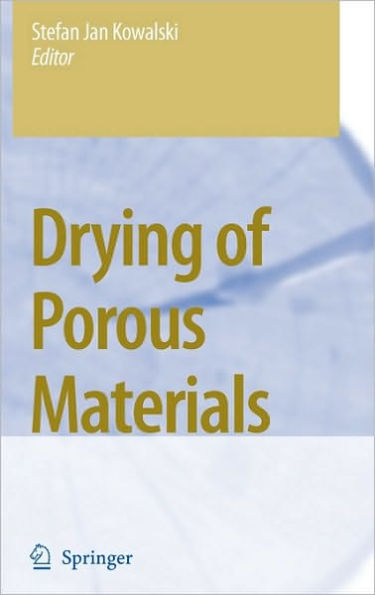Drying of Porous Materials
Thermal drying has been recognized as an important unit operation as it is ener- intensive and has a decisive effect on the quality of most products that are dried commercially. Escalating energy costs, demand for eco-friendly and sustainable te- nologies as well as the rising consumer demand for higher quality products, have given fresh incentives to industry and academia to devote great effort to drying R&D. Fortunately, this area does not demand a massive perfusion of R&D funds to come up with valuable insights and innovations, with only a few exceptions. Indeed, there is already a sustainable level of R&D support—both in terms of human and financial resources—around the world. Emerging economies of the world, such as China, B- zil, India, etc, have picked up the slack caused by the fully developed economies of the west moving towards nanotechnologies. Overall, the global R&D effort has been rising despite precipitous drops in North America and Europe. With 12–25% of the national industrial energy consumption attributable to industrial drying in developed countries, it is only a matter of time before high energy costs will stimulate further R&D in drying.
1101311849
Drying of Porous Materials
Thermal drying has been recognized as an important unit operation as it is ener- intensive and has a decisive effect on the quality of most products that are dried commercially. Escalating energy costs, demand for eco-friendly and sustainable te- nologies as well as the rising consumer demand for higher quality products, have given fresh incentives to industry and academia to devote great effort to drying R&D. Fortunately, this area does not demand a massive perfusion of R&D funds to come up with valuable insights and innovations, with only a few exceptions. Indeed, there is already a sustainable level of R&D support—both in terms of human and financial resources—around the world. Emerging economies of the world, such as China, B- zil, India, etc, have picked up the slack caused by the fully developed economies of the west moving towards nanotechnologies. Overall, the global R&D effort has been rising despite precipitous drops in North America and Europe. With 12–25% of the national industrial energy consumption attributable to industrial drying in developed countries, it is only a matter of time before high energy costs will stimulate further R&D in drying.
169.99
In Stock
5
1

Drying of Porous Materials
231
Drying of Porous Materials
231Hardcover(2007)
$169.99
169.99
In Stock

Product Details
| ISBN-13: | 9781402054792 |
|---|---|
| Publisher: | Springer Netherlands |
| Publication date: | 04/12/2007 |
| Edition description: | 2007 |
| Pages: | 231 |
| Product dimensions: | 6.10(w) x 9.50(h) x 0.60(d) |
From the B&N Reads Blog
